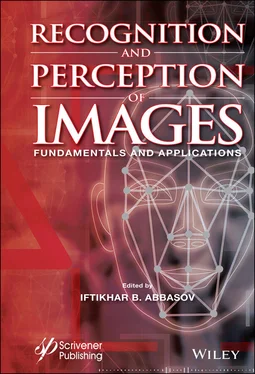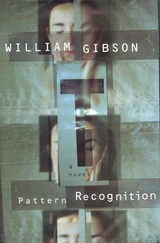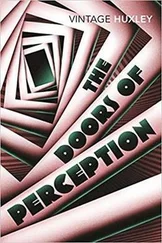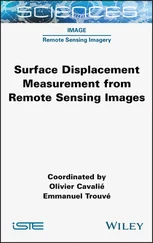1 ...6 7 8 10 11 12 ...19 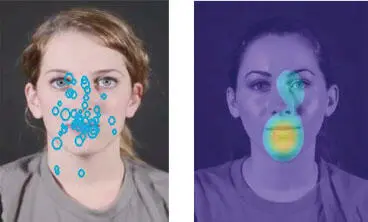
Figure 1.2.5 Comparison of methods for determination of regions of interest and principal component analysis [Wegner-Clemens et al., 2017].
The work of [Barabanschikov et al ., 2010] analyzes the definition of oculomotor activity and expressions perception depending on the space orientation of the face. It is demonstrated that 180° rotation of face image results in the declining of efficiency of recognition of emotions intensity. The weak expressions of the face on the reversed image are perceived as the calm state. This process depends on the emotions modality and has the complex nonlinear nature. The “fear” and “grief” are identified worst of all, and the calm face expression – better and more stable. If increasing the intensity of emotions of the face on the direct-viewing image the effect of left-sided dominance is registered, and in case of reversed image the effect size is increased ( Figure 1.2.6). However, the dominance of perceiving of feebly marked expressions has a right-sided nature.
The work of [Basyul et al., 2017] is dedicated to the study of oculomotor activity in case of face recognition. Thirty-two persons of Tuvan nationality who evaluated the likeliness of goal objects presented in pairs by means of a five-grade scale took part in the experiment. The goal pairs of photos with human faces which were coupled by means of two original photos (Caucasoid and Asian type) and four intermediate photos were used as the stimulus material. They were made with the help of morphing in increments of 20% ( Figure 1.2.7). The oculomotor activity of test subjects was registered by means of eye tracker EyeTribe in the course of stimulus material presenting. The actuality of research is determined by the questions of maintenance of public security and business communication.
Let’s consider the main types of micro- and macromovements of human eye used by us in everyday life.
Saccades. The most frequent eye movement is the saccade (French, saccader – tugging). A saccade is a tear-off, discontinuous movement of the eyes, with a quick transfer of gaze from one object to another. Saccades can be small (less than 3° fields of view) and large (about 40°). Macro saccade occurs when abrupt changes in the position of the eye are performed with high speed and accuracy. Usually the frequency, angular velocity and direction of gaze are determined by the nervous system in advance. In order to avoid undesirable effects, saccadic movements are performed extremely quickly. Muscles performing saccadic movements are among the fastest muscles in the body. Usually the number of saccades is up to 3 times per second. Saccades can be reflex and controllable, and they are also performed in a state with closed eyes.
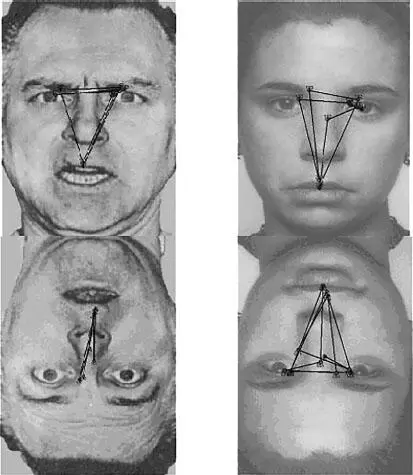
Figure 1.2.6 Examples of oculograms of different test subjects who perceive the expressions of face on the direct-viewing and reversed images [Barabanschikov et al., 2010].

Figure 1.2.7 Transition row of face images from which the goal stimulus pairs are formed [Basyul et al., 2017].
Saccades are used primarily for examination and study of the visual field. They are especially important when performing such visual tasks as reading or viewing paintings, photographs, and portraits ( Figure 1.2.8, 1.2.9). Eye movements when viewing an image ensure that its various parts get into the zone of the central fossa, which makes it possible to examine the details. The points at which the gaze is fixed are not accidental. These are the most informative places of the image, the places where the most important signs are located. For example, when scanning a face in a photograph, the set of fixation points falls on the areas where the eyes, nose and mouth are located.
It is well known that the algorithm for eye movement during reading is intermittent. While reading, the eyes perform a series of saccades alternating with pauses, fixations, and some return movements (repressions). The reading process itself takes place precisely during fixations; with saccadic movements, the vision is functionally blocked.
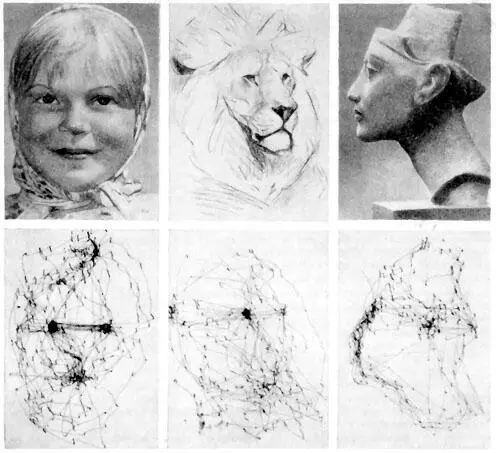
Figure 1.2.8 Schemes of eye movement when viewing various images [Yarbus, 1967].
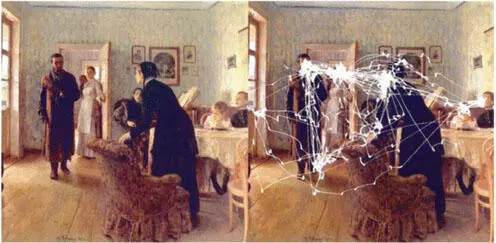
Figure 1.2.9 A reproduction of the painting “Didn’t Wait” by Russian artist I. Repin [Repin, 2020], was used to determine oculomotor activity (right) [Yarbus, 1967].
The reader seeks to fix the view on the most meaningful fragments of the text; as a rule the word is the object of fixation. When reading, we can recognize an average of 4-5 letters to the left of the fixation point and 8-11 to the right with normal font sizes. The spaces between the words play the role of visual design; they are crucial for the algorithm of eye movements. Reading speed significantly decreases with no gaps. Try to read the text typed without spaces, presented in Figure 1.2.10. This will require fixing the gaze on each letter, but if you continue the reading process, then addiction will occur; the eye will perform shorter saccades, and the reading comfort will increase.
Eye tracking. Tracking eye movements are a reflex, and occur when tracking a moving stimulus. Unlike saccades, these movements are smooth and slow. Usually the speed of tracking movements is determined by the speed of movement of the stimulus; this ensures the stabilization of the image on the retina.
Vestibulo – ocular movements. When we change the position of the head and body in space, we continue to perceive our surroundings in a stable way. This is achieved through compensatory movements of the eyeballs,

Figure 1.2.10 Text without spaces between words.
which allow you to maintain a stable image. These movements are reflex vestibulo – ocular movements. Eye movements are stimulated by the vestibular apparatus of the middle ear, where the sensory system is located to determine the location of the body in space. During physical activity, the eyes perform precise movements, compensating for both body movements and head movements.
Vergent eye movements. Sometimes there is a need for coordinated movements of both eyes; these movements are called vergent . Vergent movements move the eyes horizontally in opposite directions in such a way that the mixing and dilution of the visual axes (convergence and divergence) occurs. This allows both eyes to focus on the same object. Such eye movements are characteristic of primates, in which the frontal position of the eyes and the field of view has a binocular overlap. Vergent movements can be observed when the reduction of a glance at the tip of one’s own nose is required.
Читать дальше
